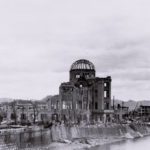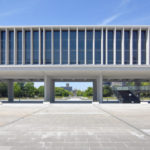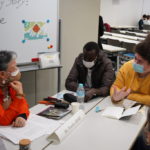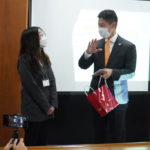IX Later history of Houses for Hiroshima
Aside from the houses built in Ushita, Houses for Hiroshima were donated to Hiroshima City and a-bomb victims lived there. Among them was a household which consisted of only children who lost their parents in the atomic bombing. In Eba Village, because many families had children, the village was filled with smiles and laughter. On the premises, people planted various vegetables and flowers. Ebasarayama Mountain itself was a playground for children95. At the community house, people residing in the village gathered as well as local people living near the area.
Later on, because of aging and changes of housing condition, Houses for Hiroshima were reconstructed or broken down. The houses in Minami-machi were reconstructed in 1982 but represent the history through its name, Minami-machi Peace House. The peace lantern that Schmoe presented stays there. In the Eba Village, deconstruction of houses started from 1975 and the last house was broken down in 1996. However, the community house has been used by local people as an assembly facility under the name of Schmoe Hall.
In 1996 when it became the last remaining building constructed by the Houses for Hiroshima project, the community house was remodeled and an explanation board was installed, reflecting the voices of local people. Its function as an assembly hall remained, being used for local meetings, calligraphy classes for children and festivals. The house was utilized by the local people. They were attached to the house96. However, the Schmoe Hall loved by the local people ended its role as an assembly hall due to maintenance of Hiroshima’s southern roads. A new assembly facility was established. Thanks to Learn from Schmoe, a volunteer group providing guidance at Schmoe House, the building was marked for preservation. One of the buildings that Schmoe mentioned as the only tangible evidence for friendship was left.
In 2012, the building was dragged (in other words, moved as was, without disassembling it) for about 40 meters to the northwest from the original location, becoming an annex of Hiroshima Peace Memorial Museum to display the stories about the support from overseas.
The passion of the local people, who have treated the facility with care, and people who convey the thoughts of Schmoe have supported its existence.
95 Schmoe ni Manabu Kai (the Learn from Schmoe Association), Houses for Hiroshima: Floyd Schmoe and His Friends, 2014
96 Schmoe ni Manabu Kai (the Learn from Schmoe Association), Houses for Hiroshima: Floyd Schmoe and His Friends, 2014








